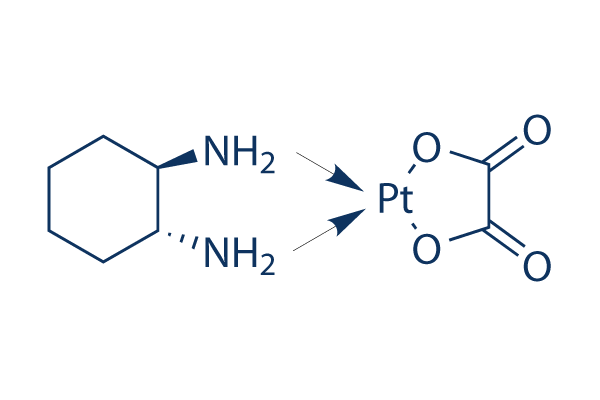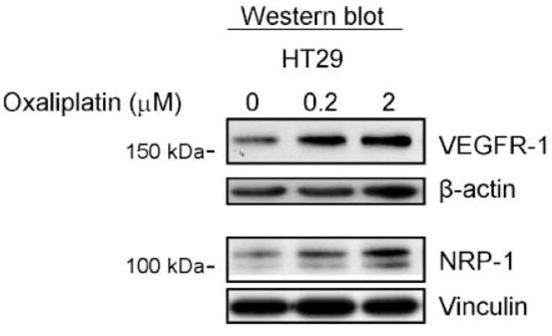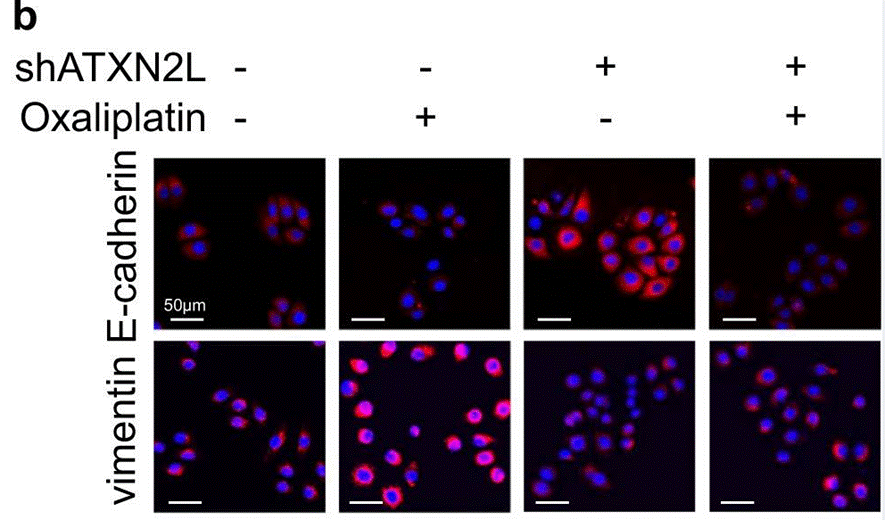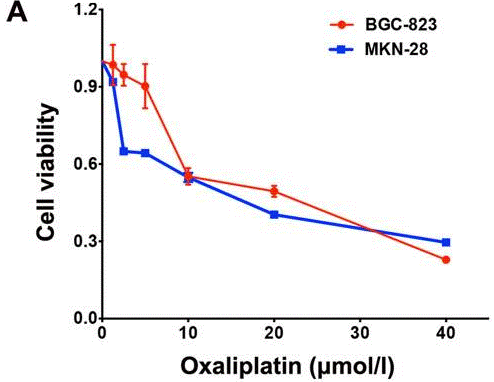
- Inhibitors
- By product type
- Natural Products
- Inducing Agents
- Peptides
- Antibiotics
- Antibody-drug Conjugates(ADC)
- PROTAC
- Hydrotropic Agents
- Dyes
- By Signaling Pathways
- PI3K/Akt/mTOR
- Epigenetics
- Methylation
- Immunology & Inflammation
- Protein Tyrosine Kinase
- Angiogenesis
- Apoptosis
- Autophagy
By research - Antibodies
- Compound Libraries
- Popular Compound Libraries
- Customize Library
- Clinical and FDA-approved Related
- Bioactive Compound Libraries
- Inhibitor Related
- Natural Product Related
- Metabolism Related
- Cell Death Related
- By Signaling Pathway
- By Disease
- Anti-infection and Antiviral Related
- Neuronal and Immunology Related
- Fragment and Covalent Related
- FDA-approved Drug Library
- FDA-approved & Passed Phase I Drug Library
- Preclinical/Clinical Compound Library
- Bioactive Compound Library-I
- Bioactive Compound Library-Ⅱ
- Kinase Inhibitor Library
- Express-Pick Library
- Natural Product Library
- Human Endogenous Metabolite Compound Library
- Alkaloid Compound LibraryNew
- Angiogenesis Related compound Library
- Anti-Aging Compound Library
- Anti-alzheimer Disease Compound Library
- Antibiotics compound Library
- Anti-cancer Compound Library
- Anti-cancer Compound Library-Ⅱ
- Anti-cancer Metabolism Compound Library
- Anti-Cardiovascular Disease Compound Library
- Anti-diabetic Compound Library
- Anti-infection Compound Library
- Antioxidant Compound Library
- Anti-parasitic Compound Library
- Antiviral Compound Library
- Apoptosis Compound Library
- Autophagy Compound Library
- Calcium Channel Blocker LibraryNew
- Cambridge Cancer Compound Library
- Carbohydrate Metabolism Compound LibraryNew
- Cell Cycle compound library
- CNS-Penetrant Compound Library
- Covalent Inhibitor Library
- Cytokine Inhibitor LibraryNew
- Cytoskeletal Signaling Pathway Compound Library
- DNA Damage/DNA Repair compound Library
- Drug-like Compound Library
- Endoplasmic Reticulum Stress Compound Library
- Epigenetics Compound Library
- Exosome Secretion Related Compound LibraryNew
- FDA-approved Anticancer Drug LibraryNew
- Ferroptosis Compound Library
- Flavonoid Compound Library
- Fragment Library
- Glutamine Metabolism Compound Library
- Glycolysis Compound Library
- GPCR Compound Library
- Gut Microbial Metabolite Library
- HIF-1 Signaling Pathway Compound Library
- Highly Selective Inhibitor Library
- Histone modification compound library
- HTS Library for Drug Discovery
- Human Hormone Related Compound LibraryNew
- Human Transcription Factor Compound LibraryNew
- Immunology/Inflammation Compound Library
- Inhibitor Library
- Ion Channel Ligand Library
- JAK/STAT compound library
- Lipid Metabolism Compound LibraryNew
- Macrocyclic Compound Library
- MAPK Inhibitor Library
- Medicine Food Homology Compound Library
- Metabolism Compound Library
- Methylation Compound Library
- Mouse Metabolite Compound LibraryNew
- Natural Organic Compound Library
- Neuronal Signaling Compound Library
- NF-κB Signaling Compound Library
- Nucleoside Analogue Library
- Obesity Compound Library
- Oxidative Stress Compound LibraryNew
- Plant Extract Library
- Phenotypic Screening Library
- PI3K/Akt Inhibitor Library
- Protease Inhibitor Library
- Protein-protein Interaction Inhibitor Library
- Pyroptosis Compound Library
- Small Molecule Immuno-Oncology Compound Library
- Mitochondria-Targeted Compound LibraryNew
- Stem Cell Differentiation Compound LibraryNew
- Stem Cell Signaling Compound Library
- Natural Phenol Compound LibraryNew
- Natural Terpenoid Compound LibraryNew
- TGF-beta/Smad compound library
- Traditional Chinese Medicine Library
- Tyrosine Kinase Inhibitor Library
- Ubiquitination Compound Library
-
Cherry Picking
You can personalize your library with chemicals from within Selleck's inventory. Build the right library for your research endeavors by choosing from compounds in all of our available libraries.
Please contact us at info@selleckchem.com to customize your library.
You could select:
- Bioreagents
- qPCR
- 2x SYBR Green qPCR Master Mix
- 2x SYBR Green qPCR Master Mix(Low ROX)
- 2x SYBR Green qPCR Master Mix(High ROX)
- Protein Assay
- Protein A/G Magnetic Beads for IP
- Anti-Flag magnetic beads
- Anti-Flag Affinity Gel
- Anti-Myc magnetic beads
- Anti-HA magnetic beads
- Poly DYKDDDDK Tag Peptide lyophilized powder
- Protease Inhibitor Cocktail
- Protease Inhibitor Cocktail (EDTA-Free, 100X in DMSO)
- Phosphatase Inhibitor Cocktail (2 Tubes, 100X)
- Cell Biology
- Cell Counting Kit-8 (CCK-8)
- Animal Experiment
- Mouse Direct PCR Kit (For Genotyping)
- Featured Products
- MRTX1133
- Nab-Paclitaxel
- KP-457
- IAG933
- RMC-6236 (Daraxonrasib)
- RMC-7977
- Zoldonrasib (RMC-9805)
- GsMTx4
- Navitoclax (ABT-263)
- TSA (Trichostatin A)
- Y-27632 Dihydrochloride
- SB431542
- SB202190
- MK-2206 Dihydrochloride
- LY294002
- Alisertib (MLN8237)
- XAV-939
- CHIR-99021 (Laduviglusib)
- Bafilomycin A1 (Baf-A1)
- Thiazovivin (TZV)
- CP-673451
- Verteporfin
- DAPT
- Galunisertib (LY2157299)
- MG132
- SBE-β-CD
- Tween 80
- Bavdegalutamide (ARV-110)
- Z-VAD-FMK
- Wnt-C59 (C59)
- IWR-1-endo
- (+)-JQ1
- 3-Deazaneplanocin A (DZNep) Hydrochloride
- RepSox (E-616452)
- Erastin
- Q-VD-Oph
- Puromycin Dihydrochloride
- Cycloheximide
- Telaglenastat (CB-839)
- A-83-01
- Ceralasertib (AZD6738)
- Liproxstatin-1
- Emricasan (IDN-6556)
- PMA (Phorbol 12-myristate 13-acetate)
- Dibutyryl cAMP (Bucladesine) sodium
- Nedisertib (M3814)
- PLX5622
- IKE (Imidazole Ketone Erastin)
- STM2457
- Saruparib (AZD5305)
- New Products
- Contact Us
research use only
Oxaliplatin DNA Synthesis inhibitor
Cat.No.S1224

Chemical Structure
Molecular Weight: 397.29
Quality Control
Batch:
Purity:
99.78%
99.78
Cell Culture, Treatment & Working Concentration
| Cell Lines | Assay Type | Concentration | Incubation Time | Formulation | Activity Description | PMID |
|---|---|---|---|---|---|---|
| Caco2 | Function Assay | 30/100 μM | 16 h | DMSO | activates Nrf2 | 24556415 |
| Caco2 | Function Assay | 3/10/30 μM | 16 h | DMSO | increases the mRNA levels of AKR1C1, NQO1, HO-1, MRP2, andMRP3 dose-dependently | 24556415 |
| Caco2 | Function Assay | 30 μM | 24 h | DMSO | induces the expression of HO-1, AKR1C, and NQO1 | 24556415 |
| SW620 | Growth Inhibition Assay | 10-70 mg/L | 24/48/72 h | inhibits cell growth in both time and dose dependent manner | 24646305 | |
| SW480 | Growth Inhibition Assay | 48 h | IC50=20.8 ug/mL | 24720675 | ||
| HCT116 | Function Assay | 2/5 µM | 24/48 h | suppresses survivin mRNA expression | 24761411 | |
| HT-29 | Growth Inhibition Assay | 1 μM | 0-72 h | inhibits cell growth in a time dependent manner | 24997451 | |
| SW480 | Growth Inhibition Assay | 1 μM | 0-72 h | inhibits cell growth in a time dependent manner | 24997451 | |
| HUVEC | Growth Inhibition Assay | IC50=11.30 ± 1.02 μM | 25307448 | |||
| HEK293 | Growth Inhibition Assay | IC50=8.82 ± 5.59 μM | 25307448 | |||
| HT-29 | Growth Inhibition Assay | IC50>50 μM | 25307448 | |||
| HCT-116 | Growth Inhibition Assay | IC50=6.24 ± 2.97 μM | 25307448 | |||
| MCF-7 | Growth Inhibition Assay | IC50=14.24 ± 1.82 μM | 25307448 | |||
| HepG2 | Growth Inhibition Assay | IC50=14.24 ± 1.82 μM | 25307448 | |||
| A549 | Growth Inhibition Assay | IC50=51.08 ± 10.96 μM | 25307448 | |||
| SGC7901 | Growth Inhibition Assay | IC50=21.73 ± 3.08 μM | 25307448 | |||
| COC1 | Growth Inhibition Assay | IC50=46.20 ± 3.14 μM | 25307448 | |||
| HCT116 | Growth Inhibition Assay | 72 h | IC50=6.23±0.75 µg/mL | 25360631 | ||
| SW480 | Growth Inhibition Assay | 72 h | IC50=10.7±2.26 µg/mL | 25360631 | ||
| MIAPaCa-2 | Function Assay | 25 µM | 24/48 h | induces cleavage of PARP, caspase-9, caspase-8 and caspase-3 | 25444914 | |
| Panc-1 | Function Assay | 25 µM | 24/48 h | induces cleavage of PARP, caspase-9, caspase-8 and caspase-3 | 25444914 | |
| MIAPaCa-2 | Apoptosis Assay | 25 µM | 24 h | induces apoptosis in a synergistic manner combined with WA | 25444914 | |
| Panc-1 | Apoptosis Assay | 25 µM | 24 h | induces apoptosis in a synergistic manner combined with WA | 25444914 | |
| HPDE | Cell Viability Assay | 25/50 μM | 24/48 h | inhibits proliferation of PC cells in a synergistic manner combined with WA | 25444914 | |
| SW1990 | Cell Viability Assay | 25/50 μM | 24/48 h | inhibits proliferation of PC cells in a synergistic manner combined with WA | 25444914 | |
| MIAPaCa-2 | Cell Viability Assay | 25/50 μM | 24/48 h | inhibits proliferation of PC cells in a synergistic manner combined with WA | 25444914 | |
| Panc-1 | Cell Viability Assay | 25/50 μM | 24/48 h | inhibits proliferation of PC cells in a synergistic manner combined with WA | 25444914 | |
| A549/CDDP | Growth Inhibition Assay | IC50=18.6 ± 1.2 μM | 25625243 | |||
| A549 | Growth Inhibition Assay | IC50=5.8 ± 0.6 μM | 25625243 | |||
| SW480 | Function Assay | 10 µg/ml | 24 h | enhances cellular autophagic flux | 25749420 | |
| SW620 | Function Assay | 10 µg/ml | 24 h | enhances cellular autophagic flux | 25749420 | |
| SW480 | Function Assay | 10 µg/ml | 24 h | increases LC3-II accumulation and decreases P62 expression | 25749420 | |
| SW620 | Function Assay | 10 µg/ml | 24 h | increases LC3-II accumulation and decreases P62 expression | 25749420 | |
| HT-29 | Growth Inhibition Assay | IC50=5.22 μM | 25761479 | |||
| SNU-175 | Growth Inhibition Assay | IC50=1.51 μM | 25761479 | |||
| COLO-320DM | Growth Inhibition Assay | IC50=5.38 μM | 25761479 | |||
| DLD-1 | Growth Inhibition Assay | IC50=8.65 μM | 25761479 | |||
| DiFi | Growth Inhibition Assay | IC50=10.95 μM | 25761479 | |||
| HCT-15 | Growth Inhibition Assay | IC50=8.64 μM | 25761479 | |||
| SCM-1 | Growth Inhibition Assay | IC50=17.5 μM | 25789057 | |||
| TMK-1 | Growth Inhibition Assay | IC50=22.6 μM | 25789057 | |||
| MKN-45 | Growth Inhibition Assay | IC50=14.0 μM | 25789057 | |||
| AGS | Growth Inhibition Assay | IC50=10.6 μM | 25789057 | |||
| S3 | Growth Inhibition Assay | IC50=53.5 ± 1.5 μM | 25801007 | |||
| SiHa | Growth Inhibition Assay | IC50=0.8 ± 0.1 μM | 25801007 | |||
| HT-29 | Growth Inhibition Assay | IC50=35.6 μM | 26003085 | |||
| DLD-1 | Growth Inhibition Assay | IC50=32.2 μM | 26003085 | |||
| HT29 | Growth Inhibition Assay | IC50=63 μM ± 18 | 26004084 | |||
| MC38 | Growth Inhibition Assay | IC50=23 μM ± 2 | 26004084 | |||
| SW620 | Growth Inhibition Assay | IC50=3.68 μM | 26023085 | |||
| SW480 | Growth Inhibition Assay | IC50=2.86 μM | 26023085 | |||
| RKO | Growth Inhibition Assay | IC50=1.23 μM | 26023085 | |||
| LoVo | Growth Inhibition Assay | IC50=1.2 μM | 26023085 | |||
| KM12 | Growth Inhibition Assay | IC50=4.37 μM | 26023085 | |||
| HCT116p53- | Growth Inhibition Assay | IC50=1.08 μM | 26023085 | |||
| HCT116 | Growth Inhibition Assay | IC50=1.04 μM | 26023085 | |||
| HCT15 | Growth Inhibition Assay | IC50=1.43 μM | 26023085 | |||
| HT29 | Growth Inhibition Assay | IC50=2.69 μM | 26023085 | |||
| DLD1 | Growth Inhibition Assay | IC50=2.01 μM | 26023085 | |||
| Colo205 | Growth Inhibition Assay | IC50=3.33 μM | 26023085 | |||
| BE | Growth Inhibition Assay | IC50=3.33 μM | 26023085 | |||
| CT26 | Cell Viability Assay | 4 mM | 48 h | decreases cell viability to 53.2% | 26137012 | |
| CT26 | Function Assay | 4 mM | 48 h | increases the expression levels of autophagy-related proteins, such as LC3-II, Beclin1 and ATG5 | 26137012 | |
| CT26 | Function Assay | 4 mM | 48 h | induces autophagy | 26137012 | |
| SK-OV-3 | Function Assay | 50 μM | 48 h | promotes sensitivity of ovarian carcinoma to NK cell-mediated cytolysis | 26138671 | |
| OVCAR-5 | Function Assay | 20 μM | 24h | promotes sensitivity of ovarian carcinoma to NK cell-mediated cytolysis | 26138671 | |
| PA-1 | Function Assay | 10 μM | 24h | promotes sensitivity of ovarian carcinoma to NK cell-mediated cytolysis | 26138671 | |
| SK-OV-3 | Function Assay | 50 μM | 96 h | up-regulates the stress ligands for NK cell-activating receptors and TRAIL receptors | 26138671 | |
| OVCAR-5 | Function Assay | 30 μM | 48h | up-regulates the stress ligands for NK cell-activating receptors and TRAIL receptors | 26138671 | |
| PA-1 | Function Assay | 10 μM | 48h | up-regulates the stress ligands for NK cell-activating receptors and TRAIL receptors | 26138671 | |
| SK-OV-3 | Function Assay | 50 μM | 96 h | triggeres the production of type I IFNs and chemokines | 26138671 | |
| OVCAR-5 | Function Assay | 30 μM | 48h | triggeres the production of type I IFNs and chemokines | 26138671 | |
| PA-1 | Function Assay | 10 μM | 24h | triggeres the production of type I IFNs and chemokines | 26138671 | |
| SK-OV-3 | Cell Viability Assay | 0-100 μM | 24/48/72 h | inhibits cell viability in both time and dose dependent manner | 26138671 | |
| OVCAR-5 | Cell Viability Assay | 0-60 μM | 24/48/72 h | inhibits cell viability in both time and dose dependent manner | 26138671 | |
| PA-1 | Cell Viability Assay | 0-20 μM | 24/48 h | inhibits cell viability in both time and dose dependent manner | 26138671 | |
| HCT116 | Growth Inhibition Assay | IC50=0.41 ± 0.02 μM | 26148596 | |||
| HT29 | Growth Inhibition Assay | IC50=0.88 ± 0.2 μM | 26148596 | |||
| SNU-387 | Growth Inhibition Assay | IC50=25 ± 2.7 μM | 26160429 | |||
| SNU-475 | Growth Inhibition Assay | IC50>30 μM | 26160429 | |||
| Hep-G2 | Growth Inhibition Assay | IC50=13.1 ± 1.6 μM | 26160429 | |||
| SNU-398 | Growth Inhibition Assay | IC50=6.5 ± 1.1 μM | 26160429 | |||
| LoVo | Function Assay | 1/5 μM | 24/48 h | induces transcriptional repression of DUT-N | 26208523 | |
| HCT116 p53+/+ | Function Assay | 1/5 μM | 24/48 h | induces transcriptional repression of DUT-N | 26208523 | |
| MDA-MB-231 | Growth Inhibition Assay | IC50=23.1 ± 0.1 μM | 26211591 | |||
| MCF-7 | Growth Inhibition Assay | IC50=15.4 ± 0.3 μM | 26211591 | |||
| SK-BR-3 | Growth Inhibition Assay | IC50=31.0 ± 0.1 μM | 26211591 | |||
| LoVo | Growth Inhibition Assay | 48 h | IC50=94.83 μM | 26269759 | ||
| HCT116 | Growth Inhibition Assay | 48 h | IC50=11.86 μM | 26269759 | ||
| SW480 | Growth Inhibition Assay | 48 h | IC50=1.87 μM | 26269759 | ||
| CaES-17 | Cytotoxicity Assay | 0–160 μM | 48 h | IC50=5.5 ± 0.2 μM | 26474693 | |
| HKESC-2 | Cytotoxicity Assay | 0–160 μM | 48 h | IC50=5.8 ± 0.5 μM | 26474693 | |
| Click to View More Cell Line Experimental Data | ||||||
Chemical Information, Storage & Stability
| Molecular Weight | 397.29 | Formula | C8H14N2O4Pt |
Storage (From the date of receipt) | 2 years 4°C(in the dark) powder |
|---|---|---|---|---|---|
| CAS No. | 61825-94-3 | Download SDF | Storage of Stock Solutions | Solutions are unstable. Prepare fresh or purchase small, pre-packaged sizes. Repackage upon receipt. | |
| Synonyms | L-OHP,NSC 266046 | Smiles | C1CCC(C(C1)[NH-])[NH-].C(=O)(C(=O)O)O.[Pt+2] | ||
Solubility
|
In vitro |
Water : 2 mg/mL Ethanol : Insoluble |
Molarity Calculator
|
In vivo |
|||||
In vivo Formulation Calculator (Clear solution)
Step 1: Enter information below (Recommended: An additional animal making an allowance for loss during the experiment)
mg/kg
g
μL
Step 2: Enter the in vivo formulation (This is only the calculator, not formulation. Please contact us first if there is no in vivo formulation at the solubility Section.)
% DMSO
%
% Tween 80
% ddH2O
%DMSO
%
Calculation results:
Working concentration: mg/ml;
Method for preparing DMSO master liquid: mg drug pre-dissolved in μL DMSO ( Master liquid concentration mg/mL, Please contact us first if the concentration exceeds the DMSO solubility of the batch of drug. )
Method for preparing in vivo formulation: Take μL DMSO master liquid, next addμL PEG300, mix and clarify, next addμL Tween 80, mix and clarify, next add μL ddH2O, mix and clarify.
Method for preparing in vivo formulation: Take μL DMSO master liquid, next add μL Corn oil, mix and clarify.
Note: 1. Please make sure the liquid is clear before adding the next solvent.
2. Be sure to add the solvent(s) in order. You must ensure that the solution obtained, in the previous addition, is a clear solution before proceeding to add the next solvent. Physical methods such
as vortex, ultrasound or hot water bath can be used to aid dissolving.
Mechanism of Action
| Features |
This product is not recommended to be dissolved in dimethylsulfoxide (DMSO).[9]
|
|---|---|
| Targets/IC50/Ki |
DNA synthesis [1]
(RT4, TCCSUP, A2780, HT-29, U-373MG, U-87MG, SK-MEL-2, HT-144 cells) |
| In vitro |
The main mechanism of action of Oxaliplatin is mediated through the formation of DNA–adducts. This compound induces primary and secondary DNA lesions that lead to cell apoptosis. [1] It is active against human melanoma cell lines C32 and G361 with IC50 of 0.98 mM and 0.14 mM, respectively. [2] This chemical effectively inhibits bladder carcinoma cell lines RT4 and TCCSUP, ovarian carcinoma cell line A2780, colon carcinoma cell line HT-29, glioblastoma cell lines U-373MG and U-87MG, and melanoma cell lines SK-MEL-2 and HT-144 with IC50 of 11 μM, 15 μM, 0.17 μM, 0.97 μM, 2.95 μM, 17.6 μM, 30.9 μM and 7.85 μM, respectively. [4] |
| In vivo |
A weekly i.p. injection of Oxaliplatin at 10 mg/kg to nude mice bearing hepatocellular HCCLM3 tumors significantly reduces tumor volume and apoptotic index. [6] This compound (5mg/kg, i.v. on days 1, 5 and 9) is active on T-leukemia-lymphoma L40 AKR with T/C of 1.77. It is also efficient on intracerebrally grafted L1210 leukemia, MA 16-C xenografts, B16 melanoma xenografts, Lewis lung xenografts and C26 colon carcinoma xenografts. [7] This chemical induces impairment of retrograde neuronal transport in mice. [8] |
References |
|
Applications
| Methods | Biomarkers | Images | PMID |
|---|---|---|---|
| Western blot | VEGFR-1 / NRP-1 p-AKT(Ser473) / AKT / PTEN / p-Src(Tyr416) p-Src(Y418) / p-FAK(Y861) |

|
18790786 |
| Immunofluorescence | E-cadherin / Vimentin ATXN2L / G3BP1 |

|
30787271 |
| Growth inhibition assay | Cell viability |

|
28339092 |
Clinical Trial Information
(data from https://clinicaltrials.gov, updated on 2024-05-22)
| NCT Number | Recruitment | Conditions | Sponsor/Collaborators | Start Date | Phases |
|---|---|---|---|---|---|
| NCT06320301 | Recruiting | Biliary Tract Cancer|Gemox Chemotherapy |
Sun Yat-Sen Memorial Hospital of Sun Yat-Sen University|Suzhou Suncadia Biopharmaceuticals Co. Ltd. |
April 1 2024 | Phase 2 |
| NCT05922358 | Not yet recruiting | Gastrointestinal Tumors |
Fujian Cancer Hospital |
September 1 2023 | Phase 2 |
| NCT05780684 | Recruiting | Colorectal Cancer|Esophagus Cancer|Appendix Cancer|Small Bowel Cancer|Ampullary Cancer |
Dartmouth-Hitchcock Medical Center |
July 14 2023 | Not Applicable |
| NCT05322590 | Recruiting | Metastatic Colorectal Carcinoma|Neuropathy |
Bexion Pharmaceuticals Inc.|ICON plc|CTI Clinical Trial and Consulting Services |
January 9 2023 | Phase 1|Phase 2 |
Tech Support
Tel: +1-832-582-8158 Ext:3
If you have any other enquiries, please leave a message.
Frequently Asked Questions
Question 1:
Is it ok to dissolve it in saline?
Answer:
When dissolved in saline, it is partially converted to cisplatin and L-isomers. The L-isomer of this compound is inactive. DMF is a better choice.
Question 2:
Is it ok to dissolve it in DMSO?
Answer:
Even though it is soluble in DMSO, the use of DMSO to dissolve this compound in biological studies is strongly discouraged. The DMSO inserts itself into the ligand and inactivates platin-containing compounds. DMF is a much better choice than DMSO.






































